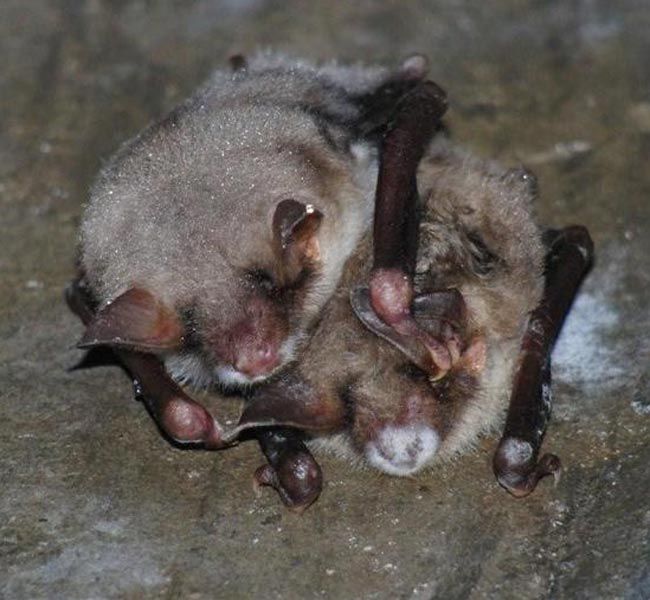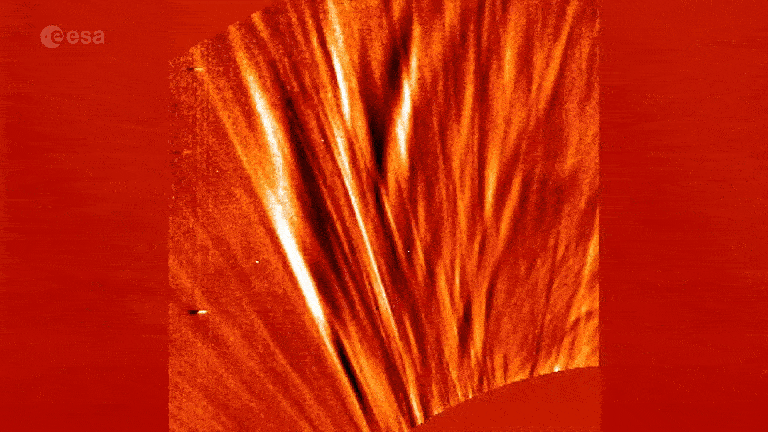Mysterious Bat-Killing Disease Appears Harmless in Europe

Almost four years after bats in the Eastern United States began awakening from their winter slumber only to die en masse, the mechanism by which the so-called white-nose syndrome kills remains a mystery. The fungus associated with it, however, appears to have a European connection, scientists now say.
Reports of European bats sporting the white puffs of fungi on their muzzles, which are the signature of white-nose syndrome in the United States, date back to the early 1980s. But no one paid much attention, because it was not associated with mass mortalities, according to Gudrun Wibbelt, a veterinary pathologist with the Leibniz Institute for Zoo and Wildlife Research in Berlin.
Now it's clear there is a connection. Wibbelt and other European and American researchers confirmed the presence of the fungus associated with white-nose syndrome, Geomyces destructans, in living German, Swiss and Hungarian bats. Two dead bats found in the United Kingdom also tested negative for this particular fungus.
In eastern Canada and in the United States as far south as Tennessee, white-nose syndrome has been decimating bat populations, with some caves and mines losing 90 percent to 100 percent of their bat populations. In Europe, however, the disease does not appear to be fatal. The relationship between the fungus in Europe and North America remains unclear, although genetic research is underway.
"Admittedly, the transmission from here in Europe into the states is not really too far-fetched," Wibbelt told LiveScience. However, it is also possible that the fungus may already have been present in North America in a less virulent form, but evolved into something much more aggressive once it hit the United States, she said.
Across the Atlantic
Comparisons between bats on the two continents won't be easy, according to Charles Rupprecht, chief of the U.S. Centers for Disease Control and Prevention's rabies program.
Sign up for the Live Science daily newsletter now
Get the world’s most fascinating discoveries delivered straight to your inbox.
For one, though related, the bat species are different in Europe. In addition, "We know very little about the immunology of bats and the whole issue of emerging infections of bats," said Rupprecht, who was not involved in the study.
Wibbelt and the other authors hypothesize that European bats may have co-evolved with the fungus and so are resistant to it. The full distribution of the fungus in Europe, or elsewhere in the world, is not yet known. This study tested for the fungus in only four European countries.
A mysterious cause
Researchers are currently preparing to study how infection by the fungus kills American bats once hibernation begins this fall, according to David Blehert, a microbiologist with the U.S. Geological Survey's National Wildlife Health Center and one of the authors of the study on European bats.
The fungus is highly invasive, penetrating its victims' top layer of skin, or epidermis, and causing lesions.
"We are not talking about a minor athlete's foot-like infection," Blehert said. "It's not your typical infectious disease where you see a microorganism attacking internal organs and causing internal system collapse."
He and the other researchers speculate that white nose syndrome may have some similarities to the chytridiomycosis fungus, which has caused dramatic losses among amphibians and also infects the skin. A 2009 study, published in the journal Science, of green tree frogs determined that the infection interfered with electrolyte transport across the skin, and ultimately caused cardiac arrest.
Likewise, infected bats develop lesions on their wings, which play important roles in water balance, circulation and thermoregulation, the researchers write in the August issue of the Journal of Infectious Diseases. There are also theories that the lesions on the bat's wings or on its nose cause the bat to wake up during hibernation. This forces the bat to use up the energy it has stored for its long sleep, exhausting the animal.
Prescriptions for bats?
Medicine may offer some hope. G. destructans appears to be susceptible to two classes of antifungal medications, as well as about five antiseptic compounds, according to Vishnu Chaturvedi, director of the mycology laboratory at New York State Department of Health's Wadsworth Center.
The antiseptics could to prevent people, who visit infected caves, from spreading the disease by decontaminating their clothes and gear. Meanwhile, the antifungals might allow researchers to preserve threatened species. In light of a recent report that the most common bat species in North America, the little brown bat, could be facing extinction because of the fungus, a small number of these bats could be placed in an artificial hibernaculum and medicated to protect them, he said.
Chaturvedi presented his findings at the September meeting of the American Society for Microbiology.
- 10 Species You Can Kiss Goodbye
- Video – How Bats Fly
- Top 10 Mysterious Diseases












